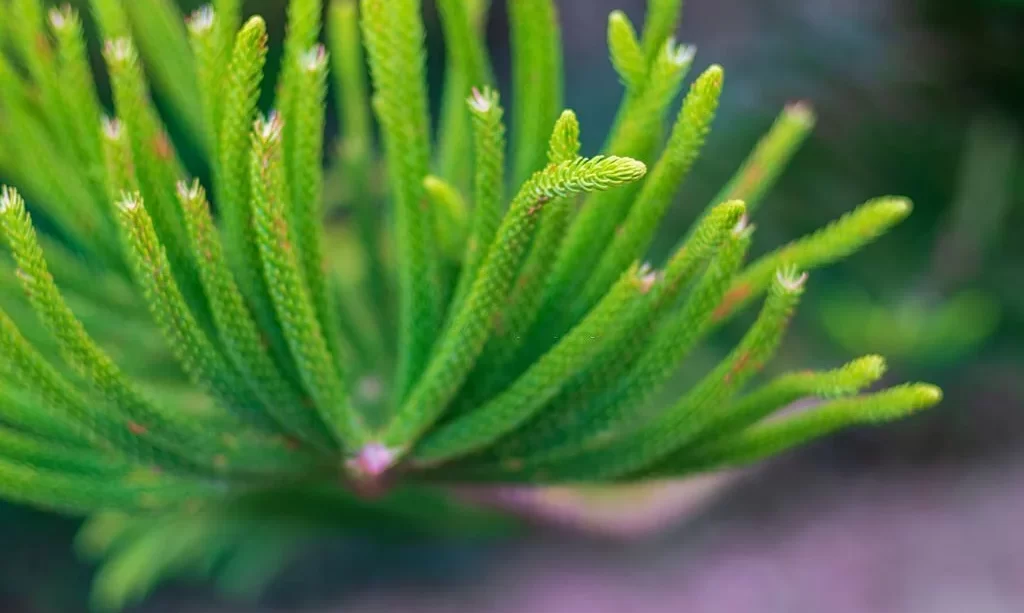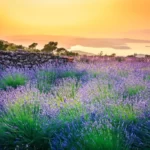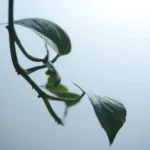The Norfolk Island Pine, with its elegant, feathery foliage, is a beloved evergreen tree that graces many homes, serving as a symbol of warmth and life throughout the year. Whether as a stunning indoor decoration or a cherished houseplant, the presence of this tree brings joy and a touch of the outdoors indoors.
However, as with any living thing, Norfolk Island Pines can sometimes fall into a state of decline, causing concern for their owners. In this article, we embark on a journey to guide you in rescuing a Norfolk Island Pine that may be on the brink of distress. With the right knowledge and care, you can nurse your evergreen companion back to health, ensuring it thrives once more. Let’s begin this journey by learning how to diagnose the problem by identifying signs of distress.
- FOR USE ON: Use Evergreen-tone organic fertilizer for all needle leaf and broadleaf evergreens. This includes pine, fir spruce, juniper as well as azaleas, rhododendron and camellias
- CONTAINS: Evergreen-tone is a rich blend of the finest natural & organic ingredients enhanced with our exclusive Bio-tone formula; 4-3-4 Fertilizer analysis with 5% Sulfur. Evergreen-tone is environmentally Safe – No sludges or toxic ingredients
- WHEN / HOW TO USE: Best to use Evergreen-tone fertilizer when planting or feeding established plants; most evergreens are best fed twice each year in early Spring and late Fall. Evergreen-tone is ready to use and requires no mixing
- FOR ORGANIC GARDENING: Evergreen-tone is approved for organic gardening; It is a registered Organic Input Material meaning it meets all requirements for organic production
- MADE IN THE USA: Product of the Espoma Company. The leader in natural organics since 1929
Diagnosing the Problem: Identifying Signs of Distress
To rescue a struggling Norfolk Island Pine, it’s crucial to first understand the language of the plant. Just as a physician examines a patient’s symptoms to make a diagnosis, you must carefully inspect your pine to recognize the telltale signs of distress. In this section, we delve into the art of plant observation, helping you become a skilled diagnostician for your beloved evergreen:
- Yellowing Needles: One of the most common and noticeable signs of distress in a Norfolk Island Pine is the yellowing or browning of needles. We explore what this symptom might indicate and its various possible causes.
- Wilting Branches: A sagging or drooping appearance can signal that something is amiss with your pine. We investigate what wilting branches can reveal about your tree’s well-being.
- Dry or Overly Wet Soil: The condition of the soil in your Norfolk Island Pine’s pot is a key diagnostic tool. We discuss how to check for proper moisture levels and what they signify.
- Overall Appearance: Beyond specific symptoms, we explore how the overall appearance of your pine can provide valuable clues about its health.
By learning to decipher these signs and symptoms, you’ll be well on your way to understanding what ails your Norfolk Island Pine and can take appropriate steps to nurse it back to vitality.
Causes: What’s Ailing Your Pine
Before administering any treatment, it’s essential to identify the root causes of your Norfolk Island Pine’s distress. In this section, we dive into the various factors that could be affecting your tree’s health, helping you pinpoint the underlying issues:
- Overwatering: We explore how overwatering can suffocate the roots, leading to root rot, mold, and other problems.
- Underwatering: The consequences of underwatering, such as dry and stressed-out roots, are discussed in detail.
- Inadequate Light: We shed light on how insufficient or excessive light can impact your pine’s growth and vitality.
- Pests and Disease: We delve into common pests like spider mites and mealybugs, as well as diseases like root rot, that can afflict Norfolk Island Pines.
- Pot-bound Roots: The consequences of your pine outgrowing its pot and becoming root-bound are explained.
- Environmental Stressors: We discuss external factors like changes in temperature, humidity, or drafts that can stress your tree.
- Approximately 3 Pounds
- Specially formulated for use on Pine trees.
- Promotes long-term vitality through robust root development.
- Slow-release Nitrogen that continues feeding throughout the growing season.
- Treats one large tree or 2-3 smaller or newly planted trees. Includes complete instructions.
Emergency Care: First Aid for Your Pine
When you notice that your Norfolk Island Pine is in critical condition, it’s essential to provide immediate first aid to address the most pressing issues. In this section, we outline the crucial steps to take to stabilize your tree’s health:
- Remove Affected Needles: We explain how to carefully remove yellowing or brown needles to improve the pine’s appearance and stimulate new growth.
- Trim Dead Branches: We guide you through the process of trimming dead or wilted branches, allowing the plant to redirect energy to healthier growth.
- Repotting: If the root system is compromised due to overwatering or root-bound conditions, we detail how to repot your pine into a more suitable container with fresh soil.
- Adjusting Watering Habits: We emphasize the importance of modifying your watering routine to provide appropriate moisture levels for your pine.
- Addressing Light Issues: We offer solutions for correcting lighting problems, whether your pine is getting too little or too much sun.
- Isolation and Quarantine: If pests or disease are suspected, we explain how to isolate the affected plant to prevent further contamination.
By understanding the potential causes behind your Norfolk Island Pine’s decline and knowing how to administer immediate care, you can increase the chances of rescuing your beloved evergreen from the brink of distress. Remember that swift and appropriate action can make a significant difference in your tree’s recovery.
Long-Term Recovery: Nurse Your Pine Back to Health
Once your Norfolk Island Pine has received initial first aid, it’s time to focus on its long-term recovery. In this section, we outline a comprehensive care plan to help your pine regain its vitality and thrive once more:
- Proper Watering: We provide guidance on establishing a consistent watering routine, emphasizing the importance of allowing the soil to partially dry between waterings.
- Humidity Management: As Norfolk Island Pines prefer higher humidity levels, we suggest ways to maintain adequate humidity in the indoor environment.
- Sunlight Requirements: We discuss the ideal lighting conditions for your pine, ensuring it receives the right amount of light for healthy growth.
- Well-Draining Soil: We emphasize the importance of using well-draining soil to prevent waterlogged roots.
- Pruning and Shaping: We explain how to encourage new growth and maintain an appealing shape through proper pruning techniques.
- Fertilization: We offer advice on fertilizing your pine to provide essential nutrients for recovery.
- Monitoring and Patience: We stress the need for regular monitoring of your tree’s progress and remind you that recovery may take time.
- Elegant Indoor Tree: Elevate your indoor space with the majestic presence of the Norfolk Island Pine. This graceful evergreen tree, with its symmetrical branches and soft, needle-like foliage, adds a touch of elegance to your home decor. Its charming pyramid shape makes it a striking focal point in any room, bringing the beauty of nature indoors.
- Year-Round Greenery: Enjoy the beauty of nature throughout the seasons. The Norfolk Island Pine boasts lush, green foliage year-round, creating a vibrant atmosphere in your living space. Its ability to maintain its verdant allure even in winter makes it a favorite choice for indoor gardening enthusiasts seeking perpetual greenery.
- Easy-Care Elegance: Embrace hassle-free plant parenting. The Norfolk Island Pine is a low-maintenance marvel, requiring minimal attention to thrive. Place it in a bright, indirect light spot and water it moderately, allowing the soil to dry out slightly between waterings. Its adaptability and forgiving nature make it an ideal choice for both beginners and experienced plant lovers.
- Natural Air Purifier: Breathe fresh with every leaf. Norfolk Island Pine acts as a natural air purifier, filtering indoor air and removing common pollutants, promoting a healthier living environment. Enhance your well-being as this botanical marvel works silently to cleanse the air you breathe, providing you with the benefits of both beauty and purity.
- Versatile Decor Element: Unleash your creativity with the Norfolk Island Pine. Its versatile nature allows it to complement various decorative styles, from classic to contemporary. Use it as a standalone statement piece, or incorporate it into lush indoor gardens and terrariums. Its adaptability makes it a perfect addition to any decor scheme.
Preventing Future Issues: Maintaining a Healthy Pine
To ensure your Norfolk Island Pine thrives in the long run and avoids future distress, proactive care and preventive measures are essential. In this section, we discuss ongoing maintenance and strategies to keep your pine healthy:
- Regular Inspection: We recommend routinely checking your pine for signs of stress, pests, or disease.
- Fertilization Schedule: We provide guidance on a fertilization schedule to support steady growth and overall health.
- Pest Prevention: We suggest strategies for preventing common pests, such as spider mites and mealybugs, from infesting your pine.
- Repotting: We explain when and how to repot your pine to prevent it from becoming root-bound.
- Environmental Considerations: We discuss the importance of maintaining a stable indoor environment, including temperature and humidity levels.
- Patience and Consistency: We emphasize that ongoing care, patience, and consistency are key to maintaining a thriving Norfolk Island Pine.
Conclusion
Reviving a dying Norfolk Island Pine is a rewarding journey that requires dedication, knowledge, and a deep appreciation for these majestic evergreens. As you embark on this quest to nurse your pine back to health, remember that you are not only saving a cherished plant but also enriching your connection to nature and the world of indoor gardening. With the right care, your Norfolk Island Pine will reward you with its lush, vibrant foliage and serve as a symbol of resilience and renewal. May your evergreen companion thrive, bringing a touch of the natural world into your home for years to come.







